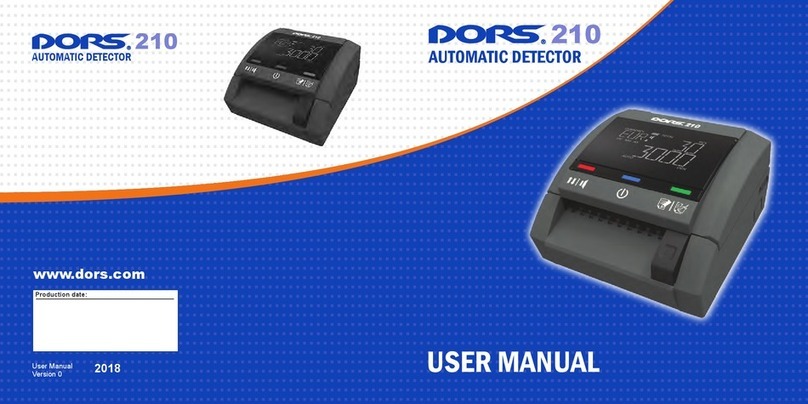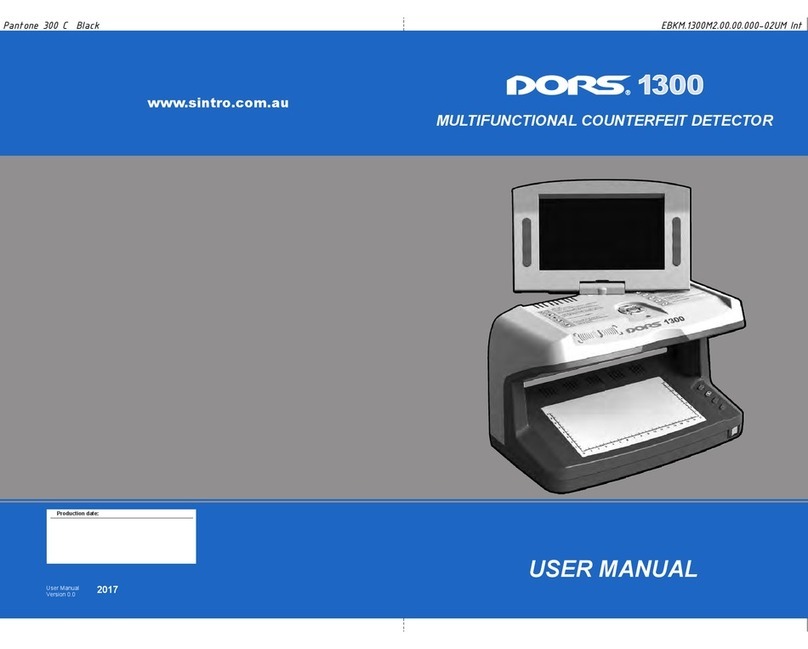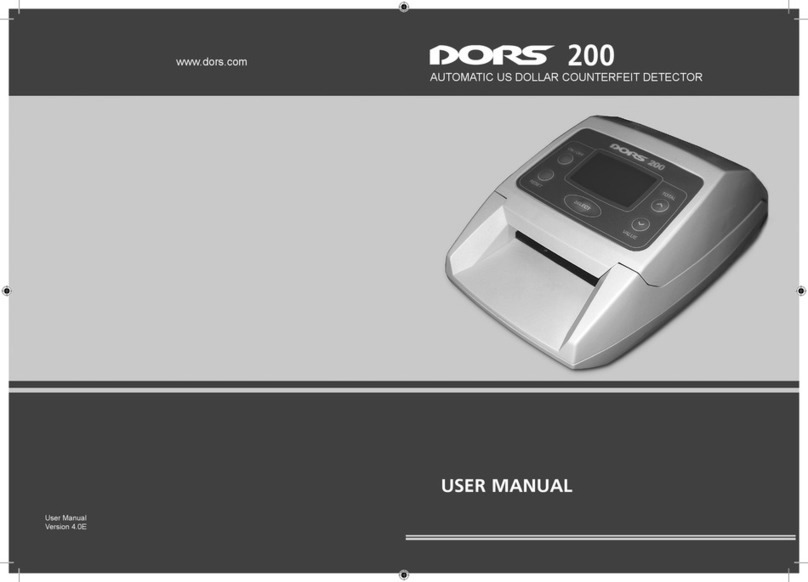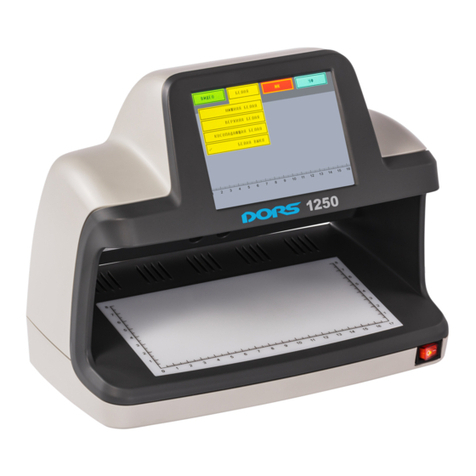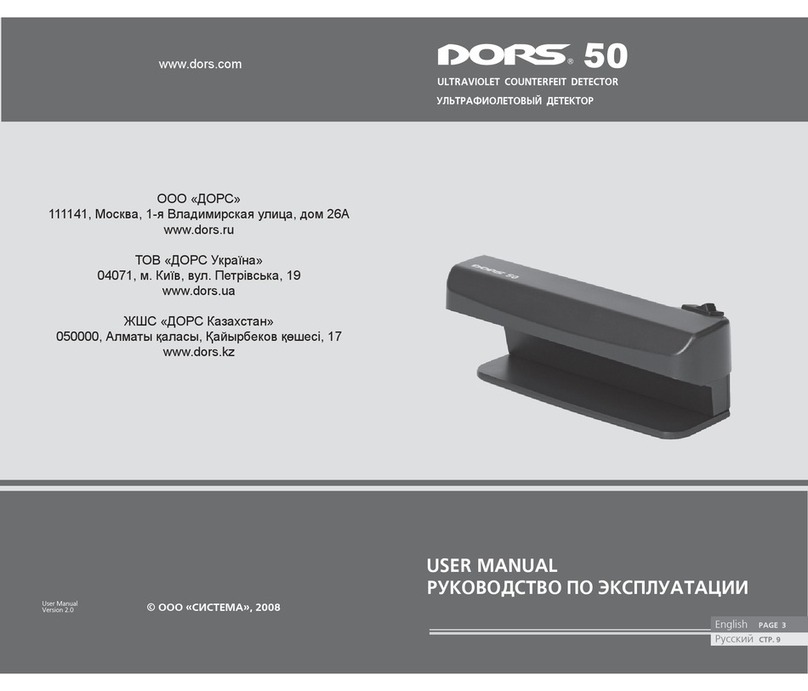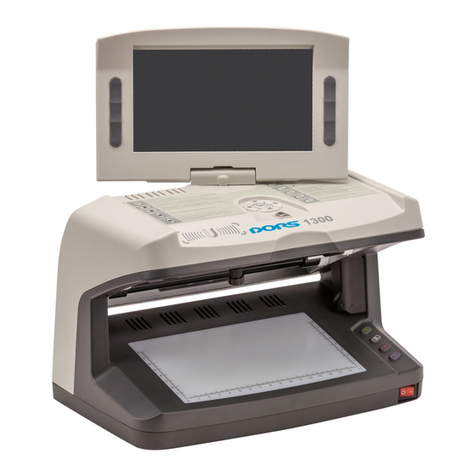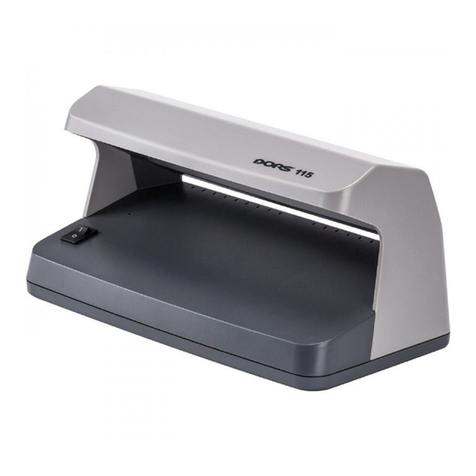
16 17
Selection of illumination mode.
Press the SET key of the top keyboard. The main menu image appears
in the top left corner of the display. Use the keys ↑and/or ↓ to select the
“MODE” menu item. Press the SET key or → to go to the “MODE” submenu.
The “Mode” submenu highlights the menu item corresponding to the current
illumination mode. Use the keys ↓ and/or ↑ in the «Mode» submenu to select
the required illumination mode. If you work without magnification (1x), the
following illumination modes are available: “UV+IR”, “Bottom White + IR”,
“Top White + IR”, “Oblique white + IR”, “Variable color + IR”, “IR”, “IR Blink”.
If you work with 10x magnification, the available illumination modes are:
“UV+IR”, “Bottom White + IR”, “Top White”, “Oblique white”, “Variable color”,
and “IR”. To set the selected illumination mode, press the SET key. It results
in switching on of the required illumination mode accompanied by displaying
an information message about the set illumination mode.
Selection of video signal source.
Press the SET key on the top keyboard. The main menu image appears
in the display top left corner. Use the keys ↑ and/or ↓ to select the “VIDEO”
menu item. Press the SET key or → to go to the “VIDEO” submenu. Use the
keys ↓ and/or ↑ in the “Video” submenu to select the required video signal
source. Press the SET key to set the required video signal source. The im-
age from the selected source is brought to the display screen. The first line
of the display will show for several seconds an information message about
the selected video signal source (“Zoom 1x”, “Zoom 10x”, “Video input V1”,
“Video input V2” or “Video input IN”).
Brightness setting.
ATTENTION! BRIGHTNESS IS SET SEPARATELY FOR EACH
VIDEO SIGNAL SOURCE. THE SET BRIGHTNESS VALUES ARE
STORED IN A NONVOLATILE MEMORY A\ND USED DURING THE
NEXT OPERATION WITH THE GIVEN VIDEO SIGNAL SOURCE.
Press the SET key on the top keyboard. The main menu image appears in
the display top left corner. Use the keys ↑ and/or ↓ to select the menu item
“Settings”. Press the SET key or → to go to the “Settings” submenu. Use
the keys ↓ and/or ↑ of the “Settings” submenu to select the “Brightness”
item. Press the SET key or → to go to the “Brightness” submenu which ap-
pears on the LCD instead of the “Settings” submenu. The current value
of the image brightness will appear on the screen. Single pressings of the
keys ↑ increase the value
UNIVERSAL COUNTERFEIT DETECTOR DORS 1300 UNIVERSAL COUNTERFEIT DETECTOR DORS 1300
or ↓ (decrease the value) set the image brightness. The latter may also be
set in a fast way by pressing the key ↑ (↓) and holding it down. To
save the set brightness value, press the SET key. Press key ← to return to
the top submenu without saving the set value (return to the previous value).
CONTRAST SETTING.
ATTENTION! CONTRAST IS SET SEPARA TELY FOR EACH VIDEO
SIGNAL SOURCE. THE SET CONTRAST VALUES ARE STORED IN
A NONVOLATILE MEMORY AND USED DURING THE NEXT OPER-
ATION WITH THE GIVEN VIDEO SIGNAL SOURCE.
Press SET key on the top keyboard. The main menu image appears in
the display top left corner. Use the keys ↑ and/or ↓ to select the menu item
“Settings”. Press SET key or → to go to the “Settings” submenu. Use the
keys ↓ and/or ↑ of the “Settings” submenu to select the item “C ontrast”.
Press SET key or → to go to the “Contrast” submenu which appears on the
LCD instead of the “Settings” submenu. The current value of the image
contrast will appear on the screen. The required image contrast is set by
single pressings of the keys ↑ (increase the value) or ↓ (decrease the
value). The contrast may also be set in fast way by pressing the key ↑ (↓)
and holding it. To save the set contrast value, press the SET key. Press key
← to return to the top submenu without saving the set value (return to the
previous value).
SETTING OF AUTO OFF TIMER.
ATTENTION! SETTINGS OF AN AUTO OFF TIMER ARE STORED
IN A NONVOLATILE MEMORY AND USED FURTHER AS THE DE-
FAULT ONES. IF THE OPTION OF AUTO OFF TIMER IS SWITCHED
ON, A APPEARS IN THE LEFT BOTTOM CORNER OF THE
SCREEN WHICH INDICATES THE TIME AFTER WHICH THE DE-
TECTOR GOES TO THE STANDBY MODE.
Press the SET key on the top keyboard. The main menu image appears in
the display top left corner. Use the keys ↑ and/or ↓ to select the “Settings”
menu item. Press the SET key or → to go to the “Settings” submenu. Use
the keys ↓ and/or ↑ in the “Settings” submenu to select the “Auto off timer”
item. Press SET key or → to go to the “Auto off timer” submenu which ap-
pears on the LCD instead of the “Settings” submenu. The value of the
current settings of an auto off timer will appear on the screen. Use the
keys ↓ and/or ↑ to select the desired time interval of the auto off timer. To
save the new value






